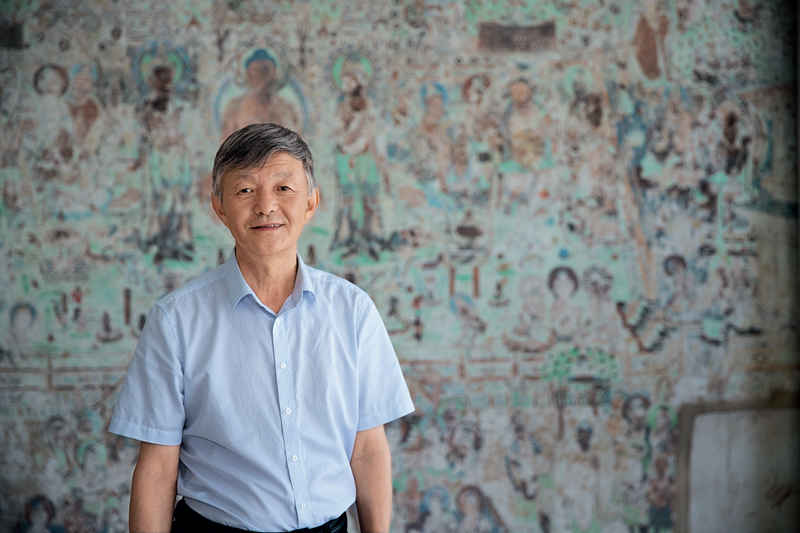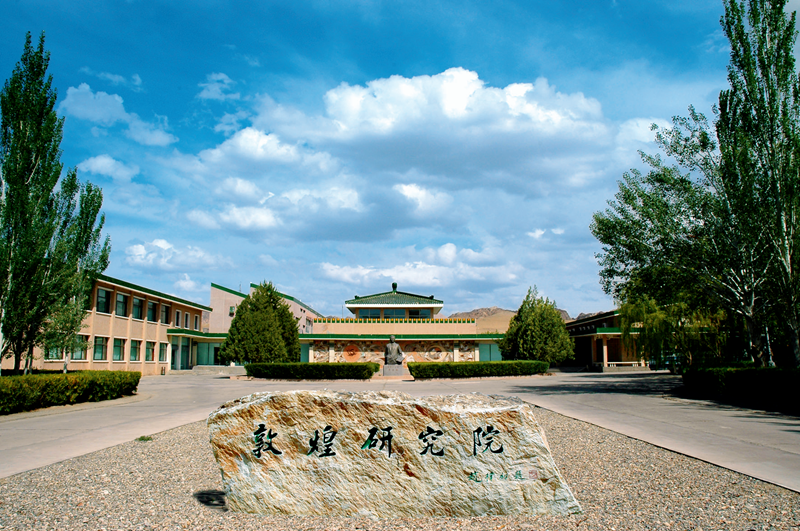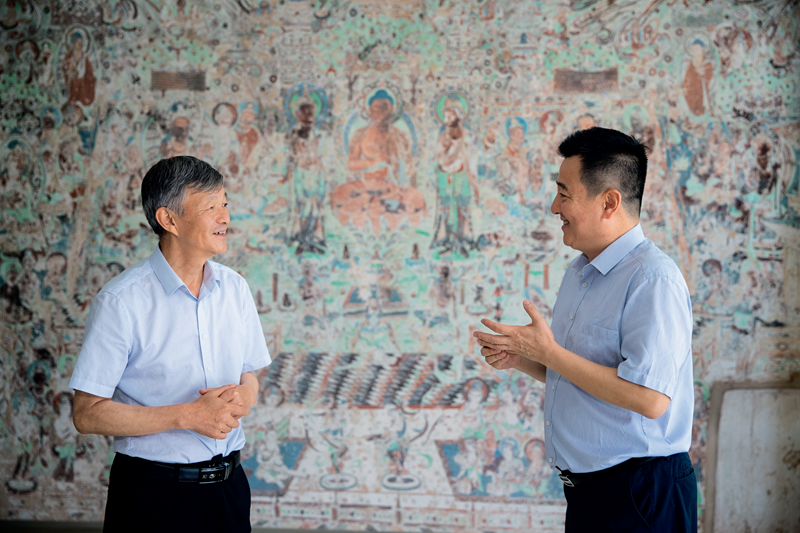Guardians of National Treasures

Fifty-year-old Su Bomin has worked with the Dunhuang Academy for more than three decades. Before becoming director of the academy, he served as head of its Cultural Relics Protection Research Institute. On the occasion of the 80th founding anniversary of the Dunhuang Academy, Su sat down with China Pictorial (CP) for an interview. He argued that protecting Dunhuang is protecting the cultural heritage of China and even the world and that the Dunhuang Academy will maintain its commitment to “building a model for world cultural heritage protection and a pedestal for Dunhuang studies.”
CP: What effective methods has the Dunhuang Academy explored to protect and revive cultural relics over the 80 years since its establishment?
Su: Cultural heritage protection is a core function of the Dunhuang Academy. Our academy’s efforts to protect the ancient Dunhuang grottoes can be divided into three stages: rescue-oriented protection, science-based protection, and preventive protection. After decades of endeavors, the internal environment of the grottoes has greatly improved, with various risks under control, and some endangered grottoes have been restored.
During the protection process, we develop many advanced ideas and approaches. For example, in terms of environmental governance, we have effectively addressed the negative impact of sandstorms on the Mogao Grottoes; in terms of mural protection, we have developed targeted preservation and restoration techniques. More importantly, we have built an experienced conservation team that not only performs basic scientific research but also carries out comprehensive protection through specific cultural relics conservation and restoration projects. Moreover, they have participated in the drafting of many industry specifications and standards for the protection of cultural relics in China, guiding and leading the healthy development of the industry.

Headquarters of the Dunhuang Academy, just around the corner from the Mogao Grottoes. (Photo courtesy of the Dunhuang Academy)
CP: How is the Dunhuang Academy building a model for world cultural heritage protection?
Su: The criteria for what we understand to be a “model” institution should include: first, the care it delivers to the cultural relics under its protection must be first-class; second, it must possess world-class capabilities and experience in cultural heritage conservation. Nowadays, our team gets invited to cure various “intractable diseases” affecting ancient grottoes around China. As we engage in more and more conservation projects, we continue to discover new problems and carry out targeted research. This enables our academy to continuously improve our cultural relics protection skills and scientific research expertise.
To become a model for cultural heritage protection in the world, the Dunhuang Academy needs to delve deeper into scientific laws of cultural relics conservation, innovate protection methods and approaches, spread management experience and protection techniques that are universally applicable, and provide valuable services for cultural relics protection in China and even the world.Academy needs to delve deeper into scientific laws of cultural relics conservation, innovate protection methods and approaches, spread management experience and protection techniques that are universally applicable, and provide valuable services for cultural relics protection in China and even the world.
CP: The Dunhuang Academy has made notable achievements in digital development. What stages has your digitalization process included so far, and what results have been achieved in this regard?
Su: After more than 30 years of tireless efforts, the Dunhuang Academy has accumulated massive multi-source and multi-form data resources. Application of “Digital Dunhuang” has provided an effective way to permanently preserve artistic information on the Dunhuang grottoes, which, to some extent, overcomes difficulties in mural copying and has become an important tool to do this job.
The continuous improvement of “Digital Dunhuang” in technology and content will help our academy make full use of its rich resources and advanced technologies to achieve several goals: We will empower tourists to enjoy cultural relics and murals in the grottoes virtually to reduce pressures on opened grottoes and effectively protect cultural relics inside while meeting visitors’ demand, and we will bring ancient grotto art back to life by deeply exploring its cultural connotations and organizing various forms of digital exhibitions around the world.

CP: Dunhuang studies have evolved into an internationally recognized school of academic research. What specific measures has the Dunhuang Academy taken to advance Dunhuang studies?
Su: Dunhuang studies contain two core areas: research of the Dunhuang grottoes and research of scriptures discovered in the Library Cave. In recent years, the Dunhuang Academy has optimized its role as a research platform and hub for Dunhuang studies. We recently opened the Dunhuang Studies Research Literature Library, which functions as a platform to publish the latest research and meet experts’ demand for relevant data and information, injecting new impetus into the development of Dunhuang studies. We are already working hard to build a “pedestal” and “model” in this regard.
Moreover, the Dunhuang Academy has played an active part in implementation of the Belt and Road Initiative (BRI) by conducting exchange and cooperation with universities, museums, and other sectors in BRI partner countries. We have worked with experts from partner countries to carry out in-depth research on topics such as relations between Dunhuang and the Silk Road, the evolution and changes of the Silk Road, and the ethnicities, religions, societies, and cultures of BRI partner countries.

CP: Generations of cultural heritage conservators and researchers from the Dunhuang Academy have forged the Mogao spirit of “staying in the desert, making dedication, taking responsibility, pioneering, and forging ahead” through tenacious efforts to protect cultural treasures of the nation. How should we understand and carry forward this spirit?
Su: The Mogao spirit has given us the inspiration to make such remarkable achievements in the conservation of the Dunhuang grottoes and realize abundant research results. For everyone at the Dunhuang Academy, Dunhuang culture has an irreplaceable position which must be preserved carefully. This is part of the foundation of the Mogao spirit.
Since its establishment, the Dunhuang Academy has aspired to lift Dunhuang studies to a higher level and present Dunhuang culture to the world. This is why the Mogao spirit has been passed on from generation to generation. I was delighted to discover that the younger generation is working to inherit and carry forward this spirit, which will heavily influence future protection and research of the Dunhuang grottoes and the inheritance and renewal of traditional culture.